
Listen to the Mockingbird. Let early birds catch worms, but Mockingbirds sing catchy ear worms.
Tone-deaf historians and criminologists continue to neglect music and thereby ignore an important soundtrack to events. Even if our frustration has now reached a boiling point as we long for information that makes sense, dubbing in a voice that sings in tune may help our narrative along
Let this be the first article of a series in which patient music analysis helps create more plausible conclusions and legal outcomes. This goes for a deconstruction of Mockingbird’s deep background as well as for finding more honest tunes, such as by Dealey Plaza earwitnesses who have been upstaged.
Like caged passerines on a perch, we sang and sang during the Operation Mockingbird era. Most of the time the only thing we knew enough to do was to follow the bouncing ball as if chirping along with a karaoke machine.
Whether overtly or obliquely implementing American Cold War policy, Mockingbird also efficiently manipulated our elections and helped cover up illegal domestic spying (among other things). Even if only rumor and still denied by many who should know, reliable sources confirm that CIA control of the media today is stronger than ever.[1]
Requiescat in Omissions
The death of Washington Post Managing Editor Ben Bradlee (1921-2014) inspired lengthy obituaries.[2] Funny how seemingly thorough (if not deliberately bloated) these timelines appear, with paragraph upon paragraph of things accomplished from Harding to Obama administrations.
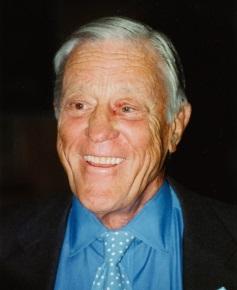
Typically not mentioned in Bradlee’s obituary printed in the Post is any work related to the CIA. A British obituary mentions Bradlee’s CIA friends during his stay in Paris in the early 1950s, and especially singles out Phil Graham (1915-1963) of the Post for getting Bradlee his early work in France and connections within the intelligence community.[3]
Perhaps because Bradlee himself always denied working for the CIA, reverent obituary writers respected the dead Watergate hero’s wishes. Still, a modest footnote or two might help clarify a noticeable gap in his completed life story.
Besides, most readers only scan lengthy obituaries without reading carefully. Wearying the reader with overtly voluble text helps keep deliberate omissions unnoticeable.
Bradlee, who fancied himself fluent in French, at least worked in Paris to control America’s reputation in Europe. We know a publication attributed to Bradlee and translated into French specifically intended to assuage morbid perceptions Europeans might have had of us after the executions of Julius and Ethel Rosenberg.[4]
Lots of reasons could compel a young journalist to write this way about the Rosenbergs. If Bradlee’s piece about the Rosenbergs was not a CIA job, why omit it from his obituary?
Pulped Fiction
If you don’t like what is in your newspaper, you can always line your passerine cage with it. Other than that, enlightened people should be careful about destroying printed material, because it may prevent others in a free society from reading it.
Tell that to author Deborah Davis who wrote a biography of Phil Graham’s wife, publisher Katharine Graham (1917-2001).[5] Its fate is now well known.
After submitting its manuscript (backed with detailed research and confidential sources) to an elite publishing company in New York City, the project was enthusiastically accepted. It was even nominated for an American Book Award.
Six weeks after hitting the stands, the same publication was withdrawn by the publisher, and all copies were sent to a wood chipper. A confrontation by none other than Ben Bradlee with Davis’s publisher set this biblio-pulverizing process in motion.
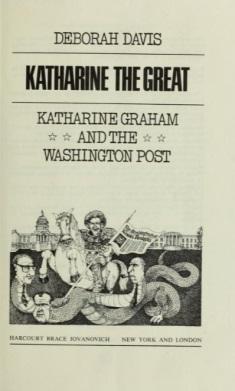
When 20,000 copies of her book became pulp to please a huffing-and-puffing Bradlee,[6] Davis sued her less-than-intrepid publisher for breach of contract for not making best efforts to market her book (which is of course an understatement). She won, and when the legal sawdust settled, her book was republished eight years later.
In the revamped version of her book, Davis reproduces a bizarre Government interoffice memorandum written on a Saturday in the final full month of the Truman administration.[7] Written by one of the Rosenberg prosecutors, it was merely reminding a higher-up in writing (i.e., they had already conferred with each other) about an unusual telephone call.
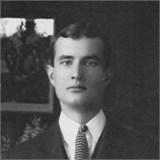
The caller was 32-year-old Bradlee claiming he had been sent to New York City by Robert Helyer Thayer (1901-1984)[8] who was “head of the C.I.A. in Paris.” Bradlee also mentioned a CIA representative who was supposed to meet him at the airport but never did.
According to the memo, Bradlee was even dropping the name of Allen Dulles (1893-1969) for leverage, which was perspicacious since Eisenhower’s announcement that Deputy Director Dulles would take over as CIA Director would not happen for another month. Also keep in mind that, in those days, flying into New York City from Paris on a propeller-driven plane for only a weekend of examining legal documents was not what normal writers did.
If confronted with the memo, Bradlee always could have claimed he was nothing more than a green journalist bluffing his way into a tightly monitored situation. He chose instead to deny CIA connections altogether all the way up to the end of his life (and beyond if you count omissions in his obituaries).
Apparently between Bradlee’s generic job title at the American Embassy in Paris (he was officially a “press attaché”) and his affiliation with a State Department organization subtly influencing various media in Europe (he was on a staff list for the United States Information and Educational Exchange or USIE[9]), Bradlee may have believed he worked under enough haze to deny CIA influence. Decades later, any friendliness between Bradlee and the CIA could have created a perception of possible conflict of interest when his two upstart reporters made media celebrities out of CIA-connected Watergate burglars.
Davis claims that, when her book was initially released, Bradlee desperately began a campaign up and down the East Coast lunching with as many editors as he could to assure them he had never written propaganda for the CIA.[10] Ben Bradlee also described any CIA involvement in his long life as nothing more than Davis’s “CIA fantasies.”
In fact, lots of young writers worked for the CIA in various capacities when traveling abroad. If Bradlee’s denials are indeed untruthful, just how close did he come into contact with the CIA?
Carl Bernstein Gathers No Moss
Another Watergate hero, Carl Bernstein, gave the generation of the late 1970s a piece of investigative journalism about CIA influence on American news. Although he did not acknowledge Operation Mockingbird by name or even the controversies surrounding Bradlee’s (i.e., his former boss’s[11]) Rosenberg article or Davis’s biography of Kate Graham, Bernstein published his feature in hip Rolling Stone magazine, perhaps symbolizing America’s youth hot on the trail of the same corrupt government that had just sent them to Vietnam and back.
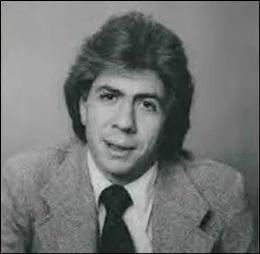
By the late 1970s, Watergate buzz had subsided a bit. Investigations from the Church Committee and House Select Committee on Assassinations had helped put the country in a mood to clean up CIA messes, even if it was as if using a small dust pan to clean up elephant droppings.
As a symbol of new transparency in this era, researchers (including Davis) still eagerly read and cite Bernstein’s article.[12] Perhaps we should believe from this enthusiasm that he has substantially exposed CIA trickery.
Nevertheless, Bernstein’s work concentrates on how the CIA regularly used American journalists abroad, mostly to keep track of their impressions of unstable political forces and adversaries in otherwise friendly foreign governments. Apparently, the CIA approached any Americans (not just journalists) in foreign countries to find out more about certain situations.[13]
Especially during the Cold War, American foreign ops depended on an interpretation of the Curtiss-Wright case,[14] which that, once an American official leaves American soil, laws and the powers of Congress do not apply. Free-for-all American spying outside the United States has never been a secret, so Bernstein’s survey was not exactly cutting-edge information or exposing anything new.
When it comes to exchanging substantial favors, conveying secret messages, spreading misinformation and juicy rumors, or even performing a task a hardcore spy might do (perhaps, smuggling something or somebody in or out of a hostile country), American journalists almost always assiduously helped the CIA with a sense of patriotic duty. Sometimes, this even involved signing a secrecy pact.[15]
Meanwhile, between Bradlee’s denials of propaganda in France and Bernstein’s seemingly thorough deep history of pesky spies picking the brains of Americans in foreign lands, the lead is efficiently buried: What did the CIA do domestically, especially as part of Operation Mockingbird, that Bradlee, Graham, or even Bernstein might have willingly participated in?
Like with voluble Bradlee obituaries, astute readers ruining their eyes reading and rereading for references to Operation Mockingbird could end up with not much else than blurry vision and droopy eyelids.
At one point, Bernstein acknowledges that Katharine Graham dramatically called William Colby (1920-1996), Director of the CIA, to see how many of his spies might have infiltrated her ranks. According to Bernstein, Colby denied any staff writers at the Post had connections, but gave no comment about stringers.[16]
Further mention of CIA propaganda reaching American soil includes the 1973 coup in Chile and how some propaganda intended for Chileans may have been inadvertently imported and reprinted.[17] There is also mention of the statement of Frank Wisner (1909-1965) about a “Mighty Wurlitzer,” but not in its original sense of manipulating both America’s Left and Right.[18]
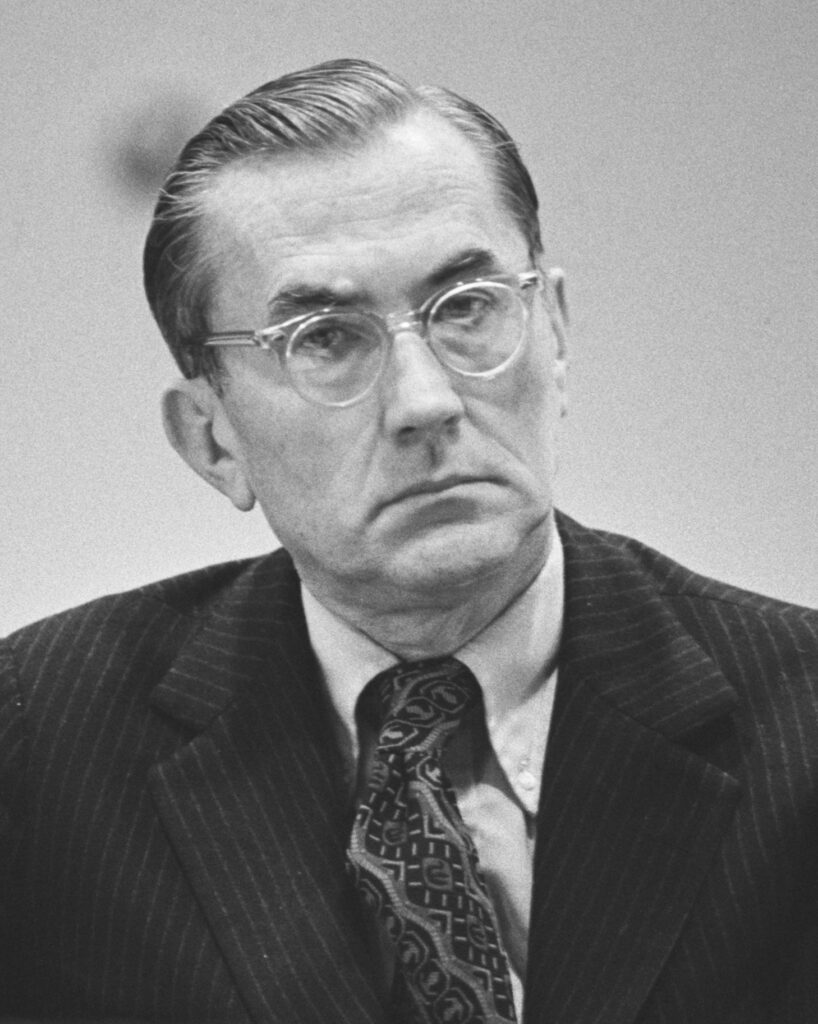
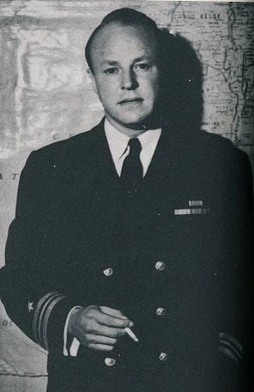
What if the lead were not only buried but cremated and its ashes scattered in the ocean? Davis’s reverence to Bernstein respects his restraint from attacking his former employer, but perhaps a blunt, kiss-and-tell article was indeed called for.
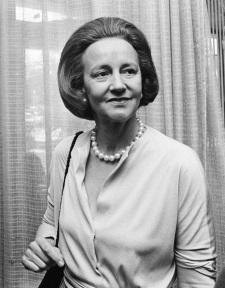
In fact, Bernstein only briefly acknowledges that especially Phil Graham worked avidly with Wisner and could therefore be relied on by the CIA when it required a Mockingbird medium. Davis goes on to imply that Phil Graham and Wisner actually conceived of Mockingbird together, as a non-violent way to fight Communism.[19]
Again and again, Kate Graham gets away with being portrayed the victim (if not even a martyr) of her sexist society, in which it is assumed to this day her husband never shared details of Operation Mockingbird. Although barely possible, it is not likely or believable, all things now considered.
La ville de l’amour
After his embassy stint, Bradlee remained in Paris as a foreign correspondent for Newsweek. Reliable rumor had it that, as a Paris barfly, he could have blended in as a sixth member of the finger-snapping, cool Rat Pack.[20]
By August 1954, two blue-blooded American sisters ran into Bradlee during their own whirlwind tour of Europe. The reunion of East Coast Establishment gave City of Love a run for its money.
Together, this Yankee trio searched for and found second wind in life after finishing up the diaper phase of raising their children. Paris metamorphosed them into elite and modern trendsetters.
Eventually Bradlee became especially sweet for the younger sister, Antoinette “Tony” Pinchot Pittman (1924-2011). The mutual attraction led them to divorcing their spouses so they could marry each other.
As Newsweek was one of the more relentless chirrups of Operation Mockingbird, presumably Bradlee was more than witting about spy culture he was about to marry into. It turns out Tony had a good friend, Cicely Harriet d’Autremont Angleton (1922-2011), who was married to the soon-to-be Chief of Counterintelligence of the CIA, James Jesus Angleton (1917-1987). Tony’s older sister Mary Pinchot Meyer (1920-1964) had been married to the man put in charge of Operation Mockingbird, Cord Meyer (1920-2001).[21] Angleton became godfather to the Meyers’ children.[22]
Unlike the way Bernstein might have you believe it, the Post acquiring Newsweek in 1961 was less a squeaky clean newspaper acquiring a perhaps tainted spy asset, than an already CIA-jaded organization swallowing up a tasty morsel. Phil and Kate Graham also famously had been mingling with CIA bigwigs once or twice a month on Sunday afternoons for a meal and cocktail hour.[23] After Phil’s death, Kate continued regularly wooing scores of Washingtonians and invited them to weekly soirees at her house.

As Bradlee also became well situated in Washington, D.C. and extremely neighborly with the Angletons, he was promoted to Managing Editor at the Post. Actually, an old Post columnist, Walter Lippmann (1889-1974) recommended Bradlee for the plum position.[24] Davis makes illuminating analysis out of Lippmann’s elitist philosophy, all but implying that the Post has always been led by philosophical elitism, even before CIA and Mockingbird. Elites should always be in the know, but what newspaper readers should know falls far short of that, says Lippmann.[25]
Bradlee had also been working closely with President John Kennedy, essentially as his mouthpiece. The relationship was not always friendly, and Kennedy usually punished Bradlee by giving him a three-month silent treatment following anything in print Bradlee wrote that displeased him.[26]
On October 13, 1964, Bradlee assisted the Washington, D.C., police in identifying the body of his murdered sister-in-law. Mary had been having an affair with President Kennedy and was murdered in public almost a year after he was.

Bradlee recalls in his memoir that he received a telephone call from his friend Wistar Janney with information that suggested Mary was dead.[27] It seems Cord Meyer also received a similar telephone call from Wistar Janney.[28]
Janney’s son Peter wonders why, in both recollections (Bradlee’s and Cord Meyer’s), they never mention that his father Wistar was a CIA agent. Peter goes on to speculate that his father was probably involved in a CIA scheme to kill Mary, who was getting too close in her JFK assassination research and whose diary might fall into the wrong hands.
In discussing how his father knew Mary was dead before Bradlee had identified the body to police, Peter Janney also points out how Bradlee testified under oath that he had no knowledge of Mary’s death until the police asked him to identify her. In summation, the same Bradlee who denied he ever worked for the CIA not only forgot his friend Wistar was a CIA agent, but he also forgot any conversation with Wistar ever took place—even under penalty of perjury—until his final memoir was written.
The Old Soft White Shoe
Whether portrayed by steady and stone-faced Jason Robards or gruff and grinning Tom Hanks, Ben Bradlee has provided us compelling cinematic glimpses over the years. Of these two esteemed actors, it was the latter who also spent good money to acquire filming and broadcasting rights to the book by Vincent Bugliosi (1934-2015), Reclaiming History,[29] a lengthy tome supporting the lone gunman theory in the JFK assassination.
At the end of Steven Spielberg’s The Post (2017), Meryl Streep (as social butterfly Graham) confronts Bruce Greenwood (as moping, despondent Secretary of Defense Bob McNamara), making us want to believe that a few bad apples in Government had fooled the smartest newspaper in America. By publishing the notorious Pentagon Papers, Graham/Bradlee finally revealed the actual untruths that supported the Vietnam War, so says the film, just in time to redeem their own souls from the false patriotic tune they had been singing throughout the 1960s.
In comparison, actor Tracy Letts speaks only a few lines in the same film as Fritz Beebe (1914-1973) who, since overseeing the Graham newspaper’s acquisition of Newsweek in 1961, had become Chairman of the Board of the new conglomerate (seeped in Operation Mockingbird—see above). Beebe’s deeper background reveals him practicing law for Cravath, Swaine & Moore,[30] starting out as an estate planner for Katharine Graham’s parents (the Meyers, who are no relation to Bradlee’s sister-in-law’s family).
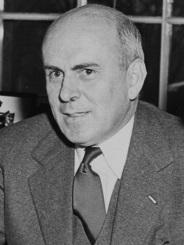
John J. McCloy of the Warren Commission was also a lawyer from Cravath, Swaine & Moore.[31] His prominent colleague on the Warren Commission, former CIA Director Allen Dulles, was a partner (along with his brother John Foster Dulles) from another famous law firm, Sullivan & Cromwell.
With these two law firms representing the backbone of legal maneuverings on Wall Street back then as well as today—otherwise nicknamed “white shoe” law firms—a bit of research shows how they made their initial fortunes restructuring bankrupted railroads during the Gilded Age. Intricate receiverships, syndicates, trusts, and holding companies kept the robber barons robbing and their secret monopolies thriving.[32]
If Operation Mockingbird helped keep CIA operations from the public eye, white shoe lawyers were on hand to expertly invent and implement false narratives in support. After all, law firms are not the Government and in theory can fool people with propaganda, as long as nothing resembling defamation, bribery, fraud or any other illegality is involved.

Before prosecutor par excellence Bugliosi took on skeptics of the Warren Commission with his Reclaiming History, Gerald Posner’s book about Lee Harvey Oswald, Case Closed,[33] also postulated such a theory in little more than a lopsided legal brief. When impeaching any witnesses muddying waters of his lone-gunman theory, Posner the shark comes forward and, with unmerciful and law-school-trained cruelty, gobbles them up.
After all, Posner was also recruited by Cravath, Swaine & Moore after finishing top of his class in his West Coast law school. Without any immunities granted by any courts anywhere such as what might be available during a trial, Posner still freely and unabashedly takes defamatory aim at his foes only to prevail in what he feels is his argument.
For example, Silvia Odio, a witness whose testimony plausibly and reasonably challenges the Warren Commission’s version of Lee Harvey Oswald’s trip to Mexico City, is reviled by Posner for being “pampered” (even though a refugee) as well as in the throes of a nervous breakdown.[34] Posner’s own “non-sinister” explanations about why “544 Camp St.” might have been stamped on the back of handbills Oswald was distributing in New Orleans find him struggling and floundering the most, since there are no available people he can dismiss as crazies (perhaps an address near Oswald’s job that once hung a “for rent” sign that he once inquired about? How about Oswald had read about Bannister’s operation there and was “getting even” with him?).[35]
When do we get to the point where we can comfortably call Cravath, Swaine & Moore and Sullivan & Cromwell what they are: deft, elite lawyers arguing things and deliberately fudging facts when it comes to procuring a victory and big payday for their clients? Capitalism in practice is notoriously hard fought, and it is assumed serious players will toss a few spitballs with the other pitches or throw a few rabbit punches in an otherwise fair fight, if they can get away with it.
Kennedy Assassination
If it took expensive white-shoe lawyers assisting the inanities of Mockingbird at the Washington Post to pick our brains (and pockets) over the decades, it may take more than a Vaudeville hook to get them off stage once and for all. One Golden Oldie that comes to mind returns to a simple truth in lieu of so much bird warbling
Three months before The Beatles first appeared on The Ed Sullivan Show, a low-budget vocal duo named Lawson and MacNeil began singing something they heard on the streets of Dallas, Texas. Instead of back and forth between city slicker and hillbilly as depicted in Deliverance (1972), late Secret Service Agent Winston “Win” Lawson[36] and Robert MacNeil of PBS’s once popular MacNeil/Lehrer Report[37] started trading off an identical lick, now in virtual harmony on the Internet.
Not available in the Mockingbird karaoke machine, their matching riffs consist of three “bangs” (so if you need lyrics written out for you, that’s “bang, bang, bang”). Count these out on your fingers, if you have to, but know that, if you want to join in, get the rhythm precisely right or you’ll mess it up.
In fact, write the rhythm out. With a few beats of rests between the first and second bangs, the final two bangs are on two consecutive beats (almost like Nancy Sinatra sings “bang, bang”).
Win’s confident tempo clips along at quarter note equals 84. Various versions of Robert’s go from the same 84 all the way down to a much slower 52, while he improvises dialogue during the first and second beat (words to the effect of “…and we all said, ‘what was that?; was it a backfire?; was it a firecracker?; what was that?’…and there was time for us to say that, and then there was…”).
Granted, Lawson/MacNeil cannot give us definitive versions of the shots in Dealey Plaza and, alas, amateur musicians often rush tempos or rhythms. Nonetheless, this cheaply concocted street music depicts a signal shot not intended to hit anything, followed by a flurry of shots.

Lawson was driving the car in front of the presidential limousine while MacNeil rode in the press bus a few cars behind it. In fact, the fellow sitting in the front passenger seat of the presidential limousine, Secret Service Agent Roy Kellerman told the Warren Commission he likewise heard the first shot, followed by a pause and then a “flurry” of shots.[38]
The Warren Commission assessed the shortest timespan between shots at 2.3 seconds.[39] Lone-gunman theorist Posner agrees with the later HSCA assessment that the quickest a rifle expert could be expected to recycle the bolt and aim on a Mannlicher-Carcano is 1.66 seconds.[40] Bugliosi actually challenges this 1.66-second limit, mentioning an expert at the HSCA testing in Lorton Correctional Facility firing range in Virginia who actually claimed he could at least recycle the bolt (without aiming) in 1.2 seconds.[41]
As the immutable laws of horology would have it, 1.66 seconds translates as lower than the lowest setting on the standard metronome.[42] The final two bangs of Lawson’s riff occur at a metronomic rate of 84 (0.71 or 60/84 seconds), twice as fast as the Posner/HSCA “limit.”[43]
A signal shot would have instructed a group of snipers to fire when the moving target arrived at a certain landmark in the street. If so, there might have even been shots ringing out simultaneously.[44]
None of these shots could have plausibly accounted for the wounds in Kennedy’s back or neck. If you believe Lawson and MacNeil got it right, you might have to revert back to older, more dramatic theories about silent flechette shots propelled by CO2 pressure, or even the legendary weapons developed for MKNAOMI, perhaps delivering saxitoxin (from Alaskan butter clams[45]) designed to paralyze the president into Thorburn’s position so that snipers could more easily get him.
Many would rather sing karaoke. Passerines often learn to sing this way, but learning to fly takes solitary patience and practice.
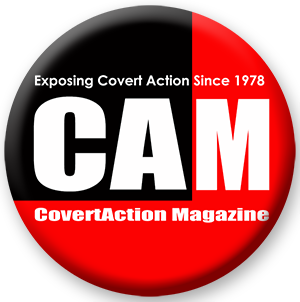
David Talbot, “All the News the CIA Sees Fit to Print,” The Kennedy Beacon, August 9, 2023, available at https://thekennedybeacon.substack.com/p/all-the-news-the-cia-sees-fit-to?fbclid=IwAR2LHSBQDXe2x2nTP3BRqU0jGFCv29hp6fN-XQB_niX-S3o6XbCjs-s-cK0 (last accessed November 3, 2023). ↑
Of the most prominent obituaries that were published, the 7,600-word feature in The Washington Post itself should suffice as an illustration here. Robert G. Kaiser, “Ben Bradlee, legendary Washington Post editor, dies at 93,” The Washington Post, October 21, 2014, available at https://www.washingtonpost.com/national/ben-bradlee-legendary-washington-post-editor-dies-at-93/2014/10/21/3e4cc1fc-c59c-11df-8dce-7a7dc354d1b1_story.html . ↑
Christopher Reed, “Ben Bradlee obituary,” The Guardian, October 21, 2014, available at https://www.theguardian.com/us-news/2014/oct/22/ben-bradlee-dies-washington-post-editor-watergate ↑
The CIA perception that these executions (which took place June 19, 1953, in Sing Sing Prison) proved especially damaging to America’s humane disposition may have been accurate; Bradlee’s job as a press attaché at the American Embassy in Paris involved duties that were unclear. See Deborah Davis, Katharine the Great: Katharine Graham and the Washington Post (Bethesda, MD: Zenith, 1987); also Peter Janney, Mary’s Mosaic: The CIA Conspiracy to Murder John F. Kennedy, Mary Pinchot Meyer, and Their Vision for World Peace (New York: Skyhorse, 2012). ↑
Davis, Katharine Graham, op. cit. ↑
This sordid tale is related in an Introduction for the second edition of Davis, Katharine Graham, op. cit., pp. vii-xii (the deliberately pulped version was published in New York by Harcourt Brace Jovanovich in 1979). Also Janney, Mary’s Mosaic, op. cit., p. 363. ↑
Davis, Katharine Graham, op. cit., p. 286; Janney, Mary’s Mosaic, op. cit., pp. 426-27. ↑
To follow up on the topic of omissions, mention of CIA duties for Thayer were also omitted from his Washington Post obituary. J. Y. Young, “Robert Thayer, Naval Officer, Diplomat, Dies,” The Washington Post, January 29, 1984, available at https://www.washingtonpost.com/archive/local/1984/01/29/robert-thayer-naval-officer-diplomat-dies/642d957a-602b-4979-a4e4-0b06f7abb10c/ ↑
Davis, Katharine Graham, op. cit., p. viii; also pp. 142-43. ↑
Janney, Mary’s Mosaic, op. cit., p. 363. ↑
Without trying to pinpoint exactly when he wrote and researched this Rolling Stone article compared to when he officially left The Washington Post in 1977 (apparently Bernstein claims it was all done after he left), suffice it to say that Bernstein did not kiss and tell by irreverently slinging mud at Bradlee or even mentioning any connections between Bradlee and the CIA. Carl Bernstein, “The CIA and the Media,” Rolling Stone. October 20, 1977, available at https://www.carlbernstein.com/the-cia-and-the-media-rolling-stone-10-20-1977 ↑
Davis, Katharine Graham, op. cit., p. 192. ↑
Even Gerald Posner, in trying to casually dismiss the CIA’s contact of George de Mohrenschildt (1911-1977), mentions the Domestic Contact Division of the CIA which routinely interviews Americans traveling abroad. Gerald Posner, Case Closed: Lee Harvey Oswald and the Assassination of JFK (New York: Random House, 1993), p. 86 (2n). ↑
United States v. Curtiss-Wright Export Corporation, 299 US 304 (1936). ↑
Bernstein, “CIA,” Rolling Stone, op. cit.. ↑
Bernstein, “CIA,” Rolling Stone, op. cit. ↑
Janney, Mary’s Mosaic, op. cit., p. 308. ↑
Hugh Wilford, The Mighty Wurlitzer: How the CIA Played America (Cambridge, MA: Harvard University Press, 2009). ↑
Davis, Katharine Graham, op. cit., p. 138. ↑
Nina Burleigh, A Very Private Woman: The Life and Unsolved Murder of Presidential Mistress Mary Meyer (New York: Bantam, 1999), p. 19. ↑
Peter Janney, “Interview with Vincent Marchetti,” Oct. 4, 2007 (quoted in Janney, Mary’s Mosaic, op. cit., p. 182 and 192). Janney also cites Bernstein’s article, even though Bernstein mentions that the CIA claimed Phil Graham “knew little of any cover arrangements with Newsweek,” which is today difficult to believe. ↑
Janney, Mary’s Mosaic, op. cit., p. 370. ↑
Davis, Katharine Graham, op. cit., p. 136; Janney, Mary’s Mosaic, op. cit., p. 248. ↑
Davis, Katharine Graham, op. cit., p. 235. ↑
See generally Walter Lippmann, Public Opinion (New York: Harcourt Brace, 1922). ↑
See generally Benjamin Bradlee, Conversations with Kennedy (New York: W. W. Norton & Company, 1984). ↑
Benjamin Bradlee, A Good Life: Newspapering and Other Adventures (New York: Simon & Schuster, 1995), p. 266; Janney, Mary’s Mosaic, op. cit., p. 338 ↑
Cord Meyer, Facing Reality: From World Federalism to the CIA (New York: Harper & Row, 1980), p. 143; Janney, Mary’s Mosaic, op. cit., pp. 340-41. ↑
Vincent Bugliosi, Reclaiming History: The Assassination of President John F. Kennedy (New York: W. W. Norton & Company, 2007). Founded by Hanks and Gary Goetzman in 1998, Playtone Productions teamed up with HBO in 2007 and announced they were producing a ten-part miniseries based on Bugliosi’s book. Gretta Parkinson, “HBO, Playtone claim ‘History,’” Hollywood Reporter, September 19, 2007, https://www.hollywoodreporter.com/business/business-news/hbo-playtone-claim-history-150496/ Whatever happened to this project is not exactly known, but apparently Playtone Productions began and then abandoned the project, releasing several smaller projects based on the JFK assassination: Parkland (2013); The Assassination of President Kennedy (2013); and Episode 1 of The Sixties (2014). ↑
Davis, Katharine Graham, op. cit., p. 185. ↑
Jeremiah D. Lambert and Geoffrey S. Stewart, The Anointed: New York’s White-Shoe Law Firms (Lanham, MD: Lyons Press, 2021), pp. 83-84. ↑
Lambert and Stewart, The Anointed, op. cit., pp. 35-44. ↑
Posner, Case Closed, op. cit. ↑
Posner, Case Closed, op. cit., pp. 175-80. The House Select Committee on Assassinations (HSCA) was critical of the Warren Commission’s handling of the Odio testimony and reported that they were “inclined to believe Silvia Odio.” Report of the Select Committee on Assassinations, U.S. House of Representatives (Ipswich, MA: Mary Ferrell Foundation Press, 2007 (1979)) p. 139, available at https://www.archives.gov/research/jfk/select-committee-report Of course, that would mean that three witnesses for the Warren Commission who vouched for Oswald’s presence on a bus to Mexico City were wrong. ↑
Posner, Case Closed, op. cit., pp. 141-42. ↑
Winston Lawson (1929-2019). “JFK Service agents Clint Hill & Gerald Blaine: POINT/COUNTERPOINT – What they allege as facts,” Vince Palamara, December 4, 2021, available at https://www.youtube.com/watch?v=uRp3Yusdq1Y (at 2 min. 13 sec.). ↑
Robert MacNeil (b. 1931). “Journalist Robert MacNeil on John F. Kennedy’s assassination – TelevisionAcademy.com/Interviews,” November 6, 2018, available at https://www.youtube.com/watch?v=vpPAR8tI5ts (at 8 min. 28 sec.). In another version, MacNeil slows the second and third shots down to about a quarter note equals 60, which is a second, still too fast for the experts to recycle the cartridge. See Barbara Kopple, Danny Schechter, Beyond JFK: The Question of Conspiracy (1992), posted at ExtraSpecialMango, April 2. 2019, available at https://www.youtube.com/watch?v=uZod18q4-Sc&t=694s (at 7 min. 51 sec.). A third version has him singing the two shots slowest of all, hovering around quarter note equals 52, still far off 1.66 seconds. “MacNeil, Lehrer remember the sorrow of JFK’s assassination.” PBSNewsHour, January 6, 2014, available at https://www.youtube.com/watch?v=N6SGZe3pLdY (at 5 min. 19 sec.). ↑
Warren Report, op. cit., p. 22. ↑
The Warren Report: Report of the President’s Commission on the Assassination of President John F. Kennedy (Associated Press, 1964), Chap. III at “TIME SPAN OF SHOTS,” pp. 46-47. ↑
HSCA Report, op. cit. p. 83; Posner, Case Closed, op. cit., p. 318. ↑
Bugliosi, Reclaiming History, op. cit., p. 490 (with three paragraphs of endnote and a footnote on the endnote that explains the 1.2 second limit). ↑
The slowest setting on the standard metronome (also known as Mätzel’s metronome) is 40, or one beat every one and a half seconds. To get to HSCA/Posner’s limit of 1.66 seconds, the metronome would have to go slower, or 36 beats per minute. The limit of 1.2 seconds Bugliosi mentions would be somewhere between 48 and 52 (and MacNeil does in one of his three versions sing it that slowly). ↑
In his dissent to the HSCA Report, Congressman Christopher J. Dodd (D-CT) points out that the interval of 1.66 seconds is what the committee was trying to determine as the time between first and second shots, which he believed was not enough time. Nothing is mentioned about the rapid succession of shots between the second and third shot, mostly because the HSCA was relying on what they were convinced was a dictabelt recording of the event. “Separate Remarks of Hon. Christopher J. Dodd Dissenting From the Final Report of the Select Committee on Assassinations,” HSCA Report, op. cit., pp. 483-90. ↑
Of 178 witnesses, 49 (27.5%) picked the Texas School Book Depository as the origin of the shots; 21 (11.8%) picked the Grassy Knoll; 30 (16.9%) believed the shots came from someplace else; and 78 (43.8%) were undecided. “Dissenting Views by Hon. Robert W. Edgar [D-PA] to the Final Report,” HSCA Report, op. cit. p. 496. ↑
Stephen Kinzer, Poisoner in Chief: Sidney Gottlieb and the CIA Search for Mind Control (New York: Henry Holt, 2019), p. 204. ↑
CovertAction Magazine is made possible by subscriptions, orders and donations from readers like you.
Blow the Whistle on U.S. Imperialism
Click the whistle and donate
When you donate to CovertAction Magazine, you are supporting investigative journalism. Your contributions go directly to supporting the development, production, editing, and dissemination of the Magazine.
CovertAction Magazine does not receive corporate or government sponsorship. Yet, we hold a steadfast commitment to providing compensation for writers, editorial and technical support. Your support helps facilitate this compensation as well as increase the caliber of this work.
Please make a donation by clicking on the donate logo above and enter the amount and your credit or debit card information.
CovertAction Institute, Inc. (CAI) is a 501(c)(3) non-profit organization and your gift is tax-deductible for federal income purposes. CAI’s tax-exempt ID number is 87-2461683.
We sincerely thank you for your support.
Disclaimer: The contents of this article are the sole responsibility of the author(s). CovertAction Institute, Inc. (CAI), including its Board of Directors (BD), Editorial Board (EB), Advisory Board (AB), staff, volunteers and its projects (including CovertAction Magazine) are not responsible for any inaccurate or incorrect statement in this article. This article also does not necessarily represent the views the BD, the EB, the AB, staff, volunteers, or any members of its projects.
Differing viewpoints: CAM publishes articles with differing viewpoints in an effort to nurture vibrant debate and thoughtful critical analysis. Feel free to comment on the articles in the comment section and/or send your letters to the Editors, which we will publish in the Letters column.
Copyrighted Material: This web site may contain copyrighted material the use of which has not always been specifically authorized by the copyright owner. As a not-for-profit charitable organization incorporated in the State of New York, we are making such material available in an effort to advance the understanding of humanity’s problems and hopefully to help find solutions for those problems. We believe this constitutes a ‘fair use’ of any such copyrighted material as provided for in section 107 of the US Copyright Law. You can read more about ‘fair use’ and US Copyright Law at the Legal Information Institute of Cornell Law School.
Republishing: CovertAction Magazine (CAM) grants permission to cross-post CAM articles on not-for-profit community internet sites as long as the source is acknowledged together with a hyperlink to the original CovertAction Magazine article. Also, kindly let us know at info@CovertActionMagazine.com. For publication of CAM articles in print or other forms including commercial internet sites, contact: info@CovertActionMagazine.com.
By using this site, you agree to these terms above.
About the Author

Gregg Wager is a composer, author, and critic.
He has written over 100 musical compositions, including a recent opera, Spectral Evidence Rhapsody. He is author of three books including The Virtuosic Mouse.
As a critic, he has written over 250 reviews for the Los Angeles Times and for the past 12 years, program notes for the Los Angeles Philharmonic.
He has a PhD in musicology from the Free University Berlin and a JD from McGeorge School of Law.
Gregg can be reached at greggwager@hotmail.com.
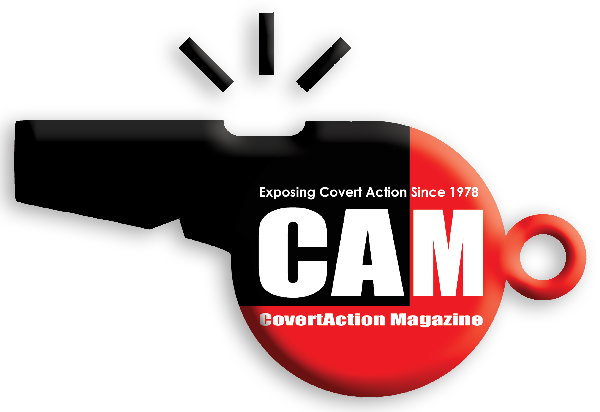

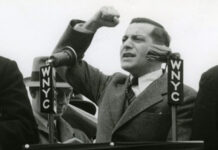


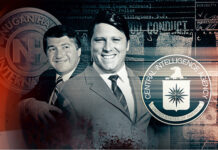

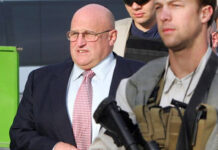



Interesting to learn that Kennedy’s original Secret Service driver, Thomas B. Shipman, died of a heart attack on 14 October 1963 not long after passing a physical. It has been claimed that he was to be the driver when Kennedy visited Texas a few short weeks later.
This is something that I have only just discovered and is an interesting twist to the JFK assassination.
Today there was some surprising news The Arab League condemned the October 7 massacre.
https://www.jpost.com/middle-east/article-862893